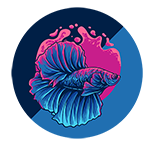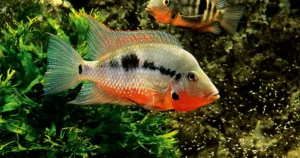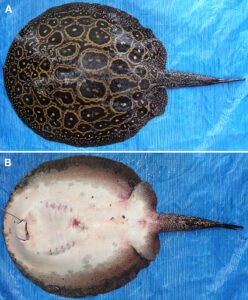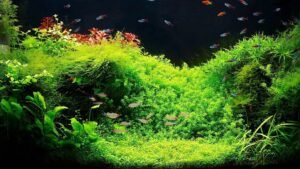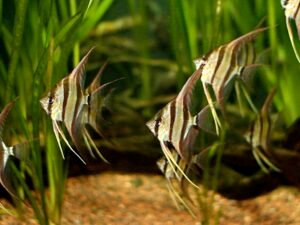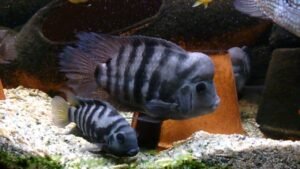“Calvus Cichlid: Care Guide, Facts, and Habitat”
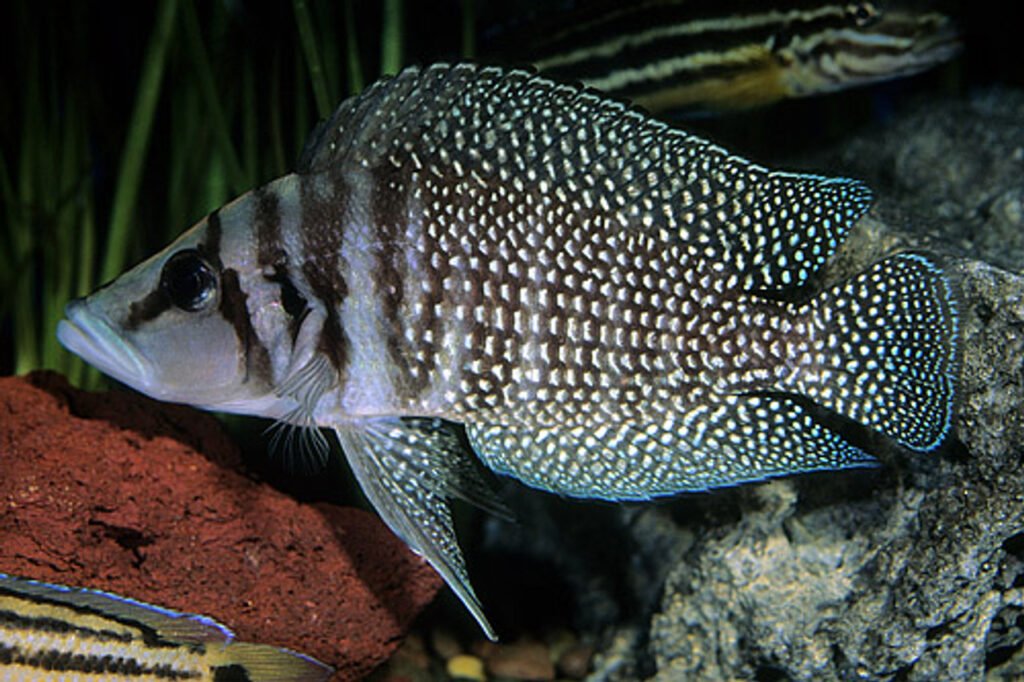
Calvus Cichlid
“Discover the Enigmatic Calvus Cichlid: A Complete Care Guide and Fascinating Facts”
Introduction
The Calvus Cichlid (Altolamprologus calvus) is a striking species renowned for its unique appearance and fascinating behavior. Native to Lake Tanganyika in Africa, these fish are known for their laterally compressed bodies and distinct scale patterns, making them a popular choice among aquarists. They exhibit a predatory nature, often hunting in rock crevices and caves. Understanding the Calvus Cichlid’s natural habitat, diet, and breeding habits is essential for providing optimal care and ensuring their well-being in captivity.
These cichlids have adapted to their rocky environments by developing laterally compressed bodies that allow them to navigate tight spaces. Their coloration ranges from dark to light shades, often with a metallic sheen that makes them stand out in any aquarium. This appearance is complemented by their unique scale patterns and pronounced fins, making them a fascinating addition to any aquarist’s collection.
To thrive in captivity, Calvus Cichlids require a tank that closely mimics their natural habitat. This means providing plenty of rocks and caves for them to hide and hunt in. Maintaining the right water parameters, such as a pH of 8.0-9.0 and a temperature of 75-80°F, is crucial. Regular water changes and efficient filtration are also important to keep the water quality high.
When it comes to feeding, Calvus Cichlids prefer a diet rich in protein. Live or frozen foods such as brine shrimp, mysis shrimp, and high-quality pellets are ideal. It’s important to avoid overfeeding and to steer clear of foods high in fat, as these can lead to health issues.
Breeding Calvus Cichlids can be a challenging yet rewarding endeavor. They are cave spawners, which means they prefer to lay their eggs in secluded, rocky areas. Providing plenty of hiding spots and maintaining optimal water conditions can encourage successful breeding. The fry should be separated and fed small live foods to ensure their survival and growth.
Facts
| Fact | Detail |
|---|---|
| Scientific Name | Altolamprologus calvus |
| Common Names | Calvus Cichlid, Black Calvus |
| Year Discovered | 1977 |
| Kingdom | Animalia |
| Phylum | Chordata |
| Subphylum | Vertebrata |
| Class | Actinopterygii |
| Order | Perciformes |
| Family | Cichlidae |
| Genus | Altolamprologus |
| Species | A. calvus |
| Max Size | Up to 6 inches |
| Temperament | Predatory, Territorial |
| Aquarium Level | Bottom to Mid-Level |
| Difficulty | Moderate to Advanced |
| Shoaling | Solitary or Pairs |
| Best Kept As | Single specimens or Pairs |
| Diet and Feeding | Carnivorous |
| Reproduction | Substrate Spawners |
| Average Lifespan | 10-15 years |
Appearance
Calvus Cichlids have a unique laterally compressed body, which allows them to navigate tight spaces in rocky environments. Their coloration ranges from black to silver, often with a metallic sheen. They have pronounced dorsal and anal fins and small, sharp teeth designed for capturing prey.
Distribution
These cichlids are endemic to Lake Tanganyika in East Africa. They prefer rocky shorelines where they can find ample hiding spots and ambush prey.
Habits and Lifestyle
Calvus Cichlids are ambush predators, feeding primarily on small invertebrates and fish. They are known for their patient hunting style, lurking in crevices and waiting for the right moment to strike. They exhibit territorial behavior, particularly during breeding periods, and can be aggressive towards other fish that invade their space.
Care Guide
Tank Setup: A tank of at least 30 gallons is recommended, with plenty of rocks and caves to mimic their natural habitat. Maintain a pH of 8.0-9.0 and a temperature of 75-80°F.
Water Parameters: Hard, alkaline water is essential. Regular water changes and efficient filtration are crucial to keep the water quality high.
Diet: Feed a diet rich in protein, including live or frozen foods like brine shrimp, mysis shrimp, and high-quality pellets. Avoid feeding too much flake food.
Physical Characteristics
Calvus Cichlids grow up to 6 inches in length. They have a distinct body shape, being highly compressed laterally, which is an adaptation for living in narrow rocky crevices. Their coloration can range from dark brown to black, often with white or silver spots, giving them a unique and striking appearance.
Diet and Nutrition
These cichlids thrive on a protein-rich diet. Ideal foods include live or frozen shrimp, insects, and specially formulated cichlid pellets. Avoid overfeeding and providing foods high in fat.
Breeding and Business
Breeding Calvus Cichlids can be challenging but rewarding. They are cave spawners, so providing suitable hiding spots is essential. Fry should be separated and fed small live foods.
Breeding Techniques: To breed Calvus Cichlids, set up a breeding tank with numerous caves and rocky shelters. The water should be kept clean and stable with a pH around 8.5 and a temperature of 78°F. The female will lay eggs in the cave, which the male will then fertilize. After fertilization, the female guards the eggs until they hatch. Once hatched, the fry should be removed to a separate rearing tank to prevent predation by the parents or other tank mates. Feed the fry baby brine shrimp and other small live foods until they are large enough to accept regular cichlid food.
Health and Diseases
Calvus Cichlids are generally hardy, but they can be susceptible to common freshwater diseases such as ich, bacterial infections, and parasites. Maintaining high water quality and a proper diet can help prevent these issues. Regular health checks and quarantine of new fish can also mitigate disease risks.
Common Diseases:
- Ich: Symptoms include white spots on the body and fins. Treat with elevated water temperatures and ich-specific medication.
- Bacterial Infections: Look for redness, ulcers, or fin rot. Antibiotic treatments in a quarantine tank are usually effective.
- Parasites: Symptoms include scratching against objects and rapid breathing. Anti-parasitic medications can help.
Commercial Medicines: Some commonly used medications for treating diseases in Calvus Cichlids include:
- Ich Treatment: Malachite Green, Formalin
- Bacterial Infections: Maracyn, Kanamycin
- Parasites: Praziquantel, Metronidazole
Behavior
Calvus Cichlids are territorial and can be aggressive, especially during breeding. They are best kept with similarly sized fish that can tolerate their assertive nature. They exhibit a range of interesting behaviors, such as ambush predation, where they hide in crevices and dart out to catch prey. They also display intricate mating rituals, which include the male showing off his colors and building nests.
FAQs
| Question | Answer |
|---|---|
| How big do Calvus Cichlids get? | They typically grow up to 6 inches in length. |
| What do they eat? | Their diet should consist of protein-rich foods such as shrimp, insects, and high-quality pellets. |
| Can they live with other fish? | Yes, but they should be housed with similarly sized, non-aggressive species. |
| How do you breed Calvus Cichlids? | Provide plenty of caves and hiding spots. They are cave spawners and require specific conditions to breed successfully. |
| What is the ideal tank setup? | A rocky environment with plenty of caves, a pH of 8.0-9.0, and a temperature of 75-80°F. |
Related Fish or Tank Mates
Suitable tank mates include other Lake Tanganyika cichlids, such as Julidochromis and Neolamprologus species.
Price Table
| Region | Price (USD) | Date |
|---|---|---|
| North America | $20-$30 | June 2024 |
| Europe | €18-€25 | June 2024 |
| Asia | $15-$25 | June 2024 |
| Australia | AUD 25-35 | June 2024 |
Factors Affecting Price
- Rarity and demand
- Size and age of the fish
- Breeding and rearing conditions
- Transportation and import costs
References
Keywords: Calvus cichlid care, Altolamprologus calvus diet, Calvus cichlid breeding, Calvus cichlid tank setup, African
Views: 7
